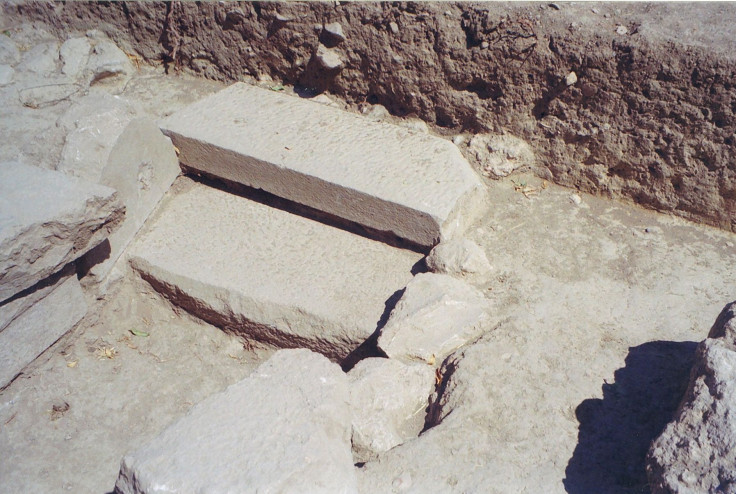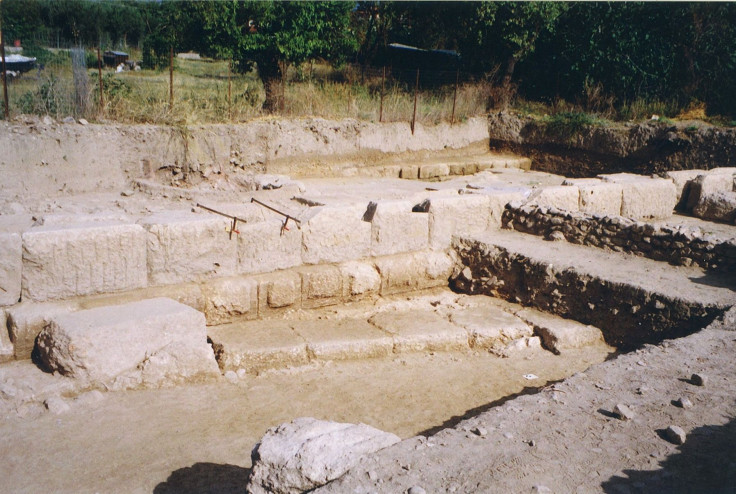Archaeologists Find Lost Ancient Greek Temple Of Goddess Artemis

It took more than 100 years of searching but archaeologists have finally found a lost temple to the ancient Greek goddess Artemis.
The Greek Ministry of Culture reported that a team has found the remains of the sanctuary near Amarynthos, a coastal town a couple of dozen miles northeast of Athens on the large Greek island of Euboea. Scientists and historians have spent more than a century looking for what is left of the temple, but an ancient text with inaccurate directions threw them off the trail.
A geographer named Strabo, who was born during the first century BCE and died in the first century AD, had written a book describing the temple as being 7 stades — an ancient Greek measurement that is the equivalent to about 1 mile — from the city Eretria. That city is another coastal area on the island Euboea, to the west of the fishing town Amarynthos. But the culture ministry said the temple to Artemis was actually found 60 stades away from Eretria, or about 6.8 miles.
One stade was the length of the footrace in the ancient Greek Olympic games and is the origin of the modern word “stadium,” where such races are currently run.
Searches using Strabo’s directions had failed to turn up any evidence of the sanctuary since the 19th century. But according to BBC News, a Swiss archaeologist on the current search team suggested the directions were wrong when he found that a Byzantine church located at the longer distance from Eretria contained stones that may have been reused from a Greek building dating to the time of the temple’s use. The team instead started to dig at the base of a hill near Amarynthos, 6.8 miles from Eretria.
They found a gallery from the northern and eastern parts of the temple that dated to the 4th century BCE, and further digging has found the “core of the sanctuary” and confirmed that the ruins are the site of the old temple, the ministry reported. The sanctuary is considered one of the most important in the island’s history.
During their excavation work, the archaeologists have found pieces from across the centuries, between the 6th and 2nd centuries BCE, including an underground fountain.
There are also inscriptions at the site with the name Artemis.
According to the ancient Greek mythology, Artemis was the daughter of Zeus, the ruler of all the gods and the god of the sky who is most well-known for wielding lightning bolts as a weapon. She was the goddess of chastity, hunting, the moon and nature, as well as a protector of women in childbirth. With all of these qualities, she was a popular deity.
Artemis’ brother was Apollo, the archer and the god of music and healing, and the daughter of Leto, with whom Zeus had the children outside of his marriage to the goddess Hera. Inscriptions referring to both Leto and Apollo were also found at the newly discovered ruins of the Amarynthos temple.
In addition to those other connections, Artemis was a hunting companion of Orion, who has been immortalized with one of the most famous constellations in the night sky.
The ancient Roman equivalent of the goddess Artemis was Diana.
The culture ministry refers to the recently rediscovered temple as being dedicated to Artemis Amarysia, with the second name being a sort of adopted surname of the goddess.

© Copyright IBTimes 2024. All rights reserved.





















